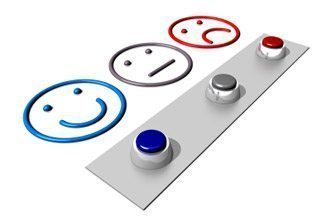Data Driven Digital Marketing – How to Accurately Predict Data to Boost Revenue
What is the principle difference between a regular decision and an informed decision when digital marketing is concerned? As anyone can understand that, the first one can be termed as guesswork with general conscience. But, the second one is a definite science. How?
In today’s digital marketing, globally 73% of marketers are investing more effort and other resources on collecting their customer’s data and churning the same to harness every information hidden beneath those data chunks. Digital marketing has already taken a giant leap forward from its existing conventional ways to the neo-modern data driven processes. Yap, marketers like to take informed decisions now.
The year 2014 had registered a mammoth $1.47 trillion ecommerce sales volume across the globe in the business to consumer section. Added to this, recent market research says that this sales volume can go up to $2. 35 trillion within 2018. Admittedly, internet users are getting matured and the current trends validate that, most of them are buying their every wishes from the web stores.
Every day, more and more typical brick and mortar businesses are stepping into the web to try their digital luck and they are employing serious measures into their data driven digital marketing strategies to stay at the cutting edge of this ever evolving user’s trend across the globe. Undoubtedly, the competition is high and to win the race it needs to invest every ounce of a marketer’s knowledge and effort to curate the data to mine the useful information from it.
- Predictive analysis is the key
Firstly, a customer is hard to come by if you are not that properly optimized for them. Secondly, if you think you are, then, it’s much harder to retain those customers by winning their trust. So, the question is how to break this jinx? Thankfully, it’s predictive analysis.
Predictive analysis is an information harnessing process from the existing data sets. Plainly, it tells you about the past and the current trends of your customer’s perception towards your business, precisely, the evolution of it. Predictive analysis shades light on a bunch of customer’s attributes like, customer interaction, their usage statistics, percentage of conversion, usage of payment gateways and more.
With these data sets at the disposal of every digital marketer, now it’s not that hard to analyze the customer trends and their buying patterns. Added to this, these also help marketers to take confident decisions to choose the right path to an even brighter future. With predictive analysis it’s easier to design important marketing factors like:
- The possible future
- Changes you need to employ in your marketing strategy
- A better understanding of critical ‘What-if’ situations
It’s already been quantified that, among a hard of emerging businesses, only those have seen a 10% increased opportunities who adopted predictive analysis. Moreover, those same early birds of predictive analysis implementers have also seen an 8% increase in their both cross sell and upsell revenues.
Simply, predictive analysis made those business groups more appealing towards their customers. Consequently, they were able to build their customer base with the much needed trust from their happy customers.
- What customers want?
Flatly, an uncomplicated processing of their needs. Every customer lands on your website with a particular exigency. At the first place they don’t need your every information. If you compare the journey of a customer through your website with a ladder then, the first step of that ladder is to direct him to that product or service he is looking for. A proper display of your product with a brilliant design of related information creates that true appeal. Otherwise, the very purpose of marketing is defeated.
A customer always tells about his or her own feelings about what they liked and disliked about you. Digital marketing harnesses this information through different data sets like, usage stats, percentage of successful conversion and customer feedback.
These data sets regarding the every single user’s behavior help you to be more foresighted about your customer’s feelings. Consequently, these important information layers regarding your every customer actually help you to take more specific and errorless decisions in your future marketing strategies. Proper analysis on a customer’s behavioral identification slashes the efforts of any marketer. If properly followed, it can deliver these following yields:
- Less guesswork
- Reduced marketing costs
- Ability to design the predictable outcomes
- Increased revenues
- The changes you need to follow
53% of today’s digital marketers believe that their decisions are mostly driven by the consumer data as they want to direct and develop their business to a more consumer centric approach. So, data is on the driving seat for them and it’s steering them to their informed decisions for boosting their revenue.
- Know the rules of big data
Recently, the term ‘big data’ has been quite a buzzword for the digital marketers. Big data is nothing but large chunks of structured or unstructured data at marketer’s disposal which are needed to be processed by able personnel to transform this into an opportunity. Otherwise, it’s a dilemma.
So, what big data demands? The answer is simple and few. They are:
- Smarter and cost-effective information processing structures
- Innovative understandability
- Ability to harness the future of current business trends
Accordingly, a marketer should know about, how to use the big data to predict the value? Plainly, how this big data can be the beacon in the dark. It’s true that big data cab be the center point of your every marketing research. It can concatenate, control and deliver every aspects of your data driven marketing approach like, clustering of customers, inventory operations, development of future products and controlled experiments. At the end of the day you are blessed with a better decision making power. So, big data or small data, whatever it is, a marketer should cultivate the future of a business with it.
- Know your potential customers
Treating every customer with the same type of offers and services is not going to help you to win their trust. The solution lies under clustering or grouping them. A clustering can be done under various segmentation. Like the list below.
- Geo location
- Gender
- Age group
- Language
- Purchasing habits
- Time of purchase
Some of the leaders of this data driven digital marketers are telling that, in future, the 80% of any company’s revenue will come from a mere 20% of its customer base. Added to this, they are also telling that if a business can retain 5% more customers, their profitability can go up to 75%.
Generally, it’s measured that it takes five times effort and cost to retain an old customer than to bring in a new one. So, what’s necessary here? Simply, don’t go for everyone. Plow your customer base first and pick those who can be termed as ‘potential customers’. Trust is the key here.
According to market researchers, these above said ways can practiced to predict data to boost overall revenue. Finally, these formulas are tested truths as already they have been implemented. Factually, this ‘big data’ thing took birth close to four years ego and still believed to be in its budding state. So, there’s much to be explored and brainstormed.







